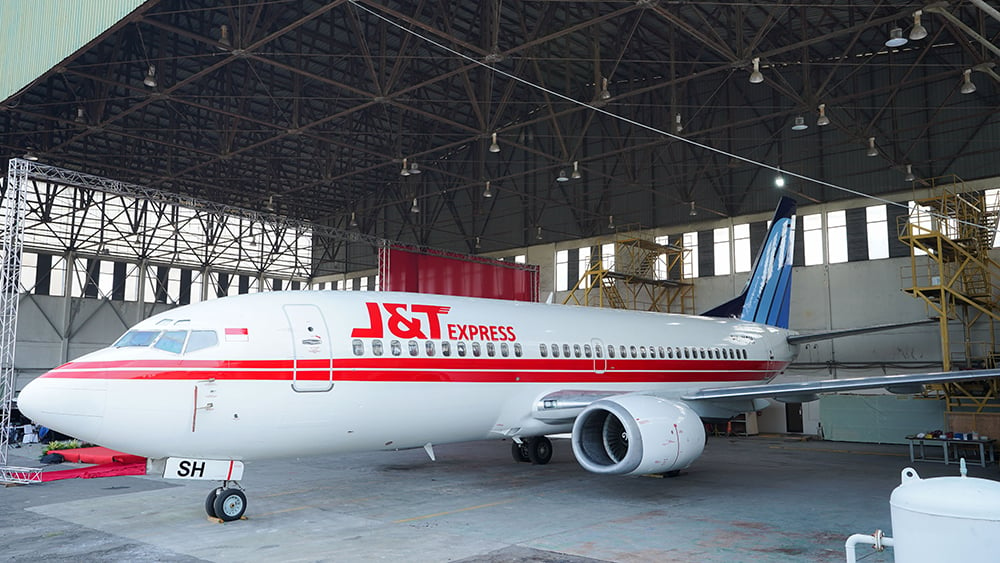Attributed to: Andrew Sim, CEO of J&T Express Singapore
Published by The Business Times, and Supply Chain Asia

Over the last decade, we’ve seen how in the context of a global crisis, the global digital narrative is capable of advancing in leaps and bounds. The SARS outbreak in 2003 was a watershed moment for Chinese internet retail giants, as millions stayed home during the epidemic, driving businesses and consumers to buy and sell goods online. When the 2008 financial crisis hit, tech companies accelerated what is now the gig and sharing economy.
We saw the same fundamental shifts during COVID-19. Widespread stay-at-home orders and concerns over the virus have shifted the context of retail demand and supply almost completely online. While retail players have since moved quickly to adapt, digitalisation continues to be considered across every foreseeable aspect, as the e-commerce boom sees no sign of stopping. Notably, Singapore’s ambitions to become a regional and global e-commerce hub will see the nation strengthening its digital infrastructure, from digital connectivity to payments systems.
For the logistics industry, which plays a key role in the e-commerce ecosystem by moving goods from production to consumption, digitalisation is imperative but also abstract. Where do you begin? While digitalisation provides great benefits, it is hard for most to keep up. The reality is digital transformation is not just about applying the technology. It is about responding to future challenges, by recognising key disruptions in the mid to long-term that logistics players need to be prepared for.
In our recent industry report, we identified important trends that will be disruptive forces moving forward. To successfully support Singapore in its e-commerce ambitions, the logistics industry needs to stay ahead of the curve, by looking at digitalisation strategically through the lens of an e-commerce and logistics landscape five to ten years from now.

The age of ‘clicks-and-mortar’
A key trend is that the future of retail will be omnichannel. Omnichannel retail gives consumers the flexibility of shipping items directly to their homes, while still having the tactile experience of shopping in-store. However, this model needs a constant flux of products seamlessly across all sales channels, and this comes with its own challenges, such as managing inventory.
To prepare for a world of ‘clicks-and-mortar’, real-time visibility across all key touchpoints in a warehouse – from storage to dispatch – is important. Digitalisation can achieve this by ensuring a more integrated approach to warehouse management using the cloud, allowing logistics players to easily access a comprehensive view of its operations and make data-driven decisions more efficiently. Merchants also benefit as they can easily keep track of inventory and orders.
The use of artificial intelligence (AI) will play a bigger role in coping with the demands of omnichannel. The easiest way to handle inventory control is to know when consumers are going to order a product, what they are going to order, and how quickly they want it. AI can also predict and discover new consumer habits, in turn forecasting seasonal demand.
Racing to meet consumer expectations
The e-commerce and logistics landscape will also increasingly feel the impact of the digitally discerning consumer. The average consumer has been forced by the pandemic to become digitally savvy, and wants a shopping experience that is efficient, accurate, and responsive to their needs. The logistics industry’s role in all of this is instrumental. When a consumer experiences delivery that falls short of expectations, this can have immense repercussions on how they view even the most reputable e-commerce platform and reconsider their own brand loyalty.
To meet increasingly discerning consumer demands, automation can help by drastically improving efficiencies in logistics. Notably, in the entire process of supply chain, parcel sortation is always a major step, and automation can greatly reduce manual demands in the sorting process as well as improving its accuracy rate. As Singaporeans’ online purchases begin to go beyond just smaller ticket items and include bigger and more expensive items like laptops, sofas, and mattresses, automation can better support the safe retrieval and transportation of these items.
At J&T Express, we launched our 4-Hour Express Delivery service earlier in March, in response to this trend. By providing this service we hope to help e-commerce merchants provide a delightful and efficient consumer experience. By integrating E-commerce Warehouse Management System (eWMS) with e-Commerce platforms and the internal system, our dedicated operational team can efficiently pick, pack, and deliver the parcels from the shelves of our fulfilment warehouse to customers’ doorstep, all within only 4 hours in Singapore islandwide. This is part of J&T Express’ ongoing commitment to improve service quality and meet customer needs.
In the future, technologies towards improving efficiencies will only become more diverse and inventive, from using drones for delivery to autonomous vehicles, the possibilities are endless. However, logistics players themselves must be discerning in what technology can best serve the needs of the supply chain.

Predicting disruptions in a globalised world
Lastly, cross-border will be the next frontier for e-commerce businesses. We are seeing more demand for cross-border shipping, as digitalisation has enabled businesses to expand their horizons to beyond the Singapore market. Southeast Asia alone, with a combined population of 630 million, a growing middle class, and rising internet penetration, already presents tremendous potential.
As logistics players expand their cross-border network to accommodate this demand, this shift comes with a bigger set of challenges – from errors in logistics networks, equipment failures, customs delays, to even political disruptions – they can all have a ripple effect that impacts the entire supply chain.
Traditionally, logistics players look to supply chain analytics as an essential tool in understanding the entire value chain. Supply chains generate massive amounts of data, and supply chain analytics help make sense of this data, uncovering patterns and generating insights that can be vital to timely decision-making.
However, to successfully build cross-border supply chains that are future-proof and can mitigate potential disruptions, supply chain analytics need to be further supported by AI, through its abilities to take insights from descriptive to predictive. AI can rapidly and comprehensively review, understand, and correlate data from disparate sources, silos, and systems. By intuitively predicting upcoming trends and issues based on existing data patterns, businesses can have access to projections that feed into key decisions.
Looking at future needs
Not everyone in the logistics industry has tipped over the technology point. While industry players recognise that technology is a critical component of any business, true digitalisation takes a significant investment of resources, time, and effort, which can be a barrier for many businesses. Adding the fact that the industry is always moving at such a fast pace, it also remains a challenge for businesses to take a step back and assess what needs to be done.
By looking to key trends and challenges the e-commerce and logistics landscape can expect in the near future, the logistics industry can more strategically identify key areas to invest technology in. Digitalisation for the sake of digitalisation will only backfire and set the industry back; the key is for the future of the logistics industry to drive the technology, not the other way around.





